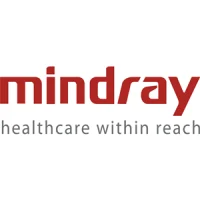Decision-making in healthcare can range along a spectrum - from shared collaborative decision-making by the patient (or surrogate) with the doctor - to the patient asking the doctor to make the decision. Decision-making in the ICU setting is often performed by surrogates, with the attendant stress of having to make a decision for someone else and the risk of the surrogate imposing their own values. Recent literature provides recommendations on facilitating shared decision-making (SDM) in the ICU, as well as evaluation of a proposed tablet-based tool to aid in communication and SDM in the ICU. An account by a critical care physician turned ICU patient puts the issue in sharp relief, as the physician states how it felt to be asked to make decisions during a period of acute intensive rescue.
The ethics committees of the American College of Critical Care Medicine (ACCM) and American Thoracic Society (ATS) have published a joint policy statement on shared decision making, which outlines the range of ethically acceptable decision-making models that are appropriate when discussing overall goals of care as well as specific treatment options that may be affected by patient values and preferences (Kon et al. 2016). The preferences of patients and/or their surrogate decision-makers should be paramount. Although a minority of patients and/or surrogates prefer to cede decision making to the clinicians, intensivists should not inadvertently assume more authority, due to their position of power in the ICU, than patients or surrogates wish. The joint statement provides advice on communication skills and communication tasks as well as sample language to use.
For surrogates the tool would include a module to educate about ICU orientation, an explanation of the principles of surrogate decision making providing a question prompt list, an exercise to clarify values, information about treatment pathways, eliciting surrogates prognostic information, and psychosocial support resources.
The vast majority of stakeholders thought the proposed tool and modules would be useful. They identified potential benefits, including helping families to prepare for the surrogate role, and having a framework to think about the patient’s values and treatment options. The stakeholders made design suggestions including conceptualising the tool as a communication supplement rather than replacement, making the tool flexible in use, incorporating interactive exercises, use of video to make it easier to absorb information and taking into account needs of people with low computer literacy.
John Hansen-Flaschen, MD, Pulmonary, Allergy and Critical Care Division, Department of Medicine, Perelman School of Medicine, University of Pennsylvania, Philadelphia, recalls his experiences of ICU in a recent article in JAMA: “I have never been so confined, constrained, and dependent on others…most instructive to me in retrospect is the degree to which I tried to hide the slowness and narrowness of my information processing and reasoning.”
Hansen-Flaschen recalls agreeing to verbal requests and signing consent forms without reading or thinking about them because he wanted to appear ‘normal’. He asserts that his reaction to the stressful situation was to appear that he was retaining control, but he did not want to have to think hard and trust his own judgement in making decisions regarding the details of his medical care.
He concludes by recommending bundling consent for the acute phase of intensive rescue. He writes:
“Concentrate on determining the patient’s overall goals of care and on earning and preserving trust. By default, do not ask, but rather tell patients or family members what is to be done next, then allow time for a considered response. If local convention dictates written consent for procedures that are ordinary components of acute rescue care, present the consent form as a vehicle for information exchange.”
He concludes that “the foundation of respect for patient autonomy lies not in multiple permissions and consents, but rather in mutual understanding and trust.”
Image credit: Pixabay
The ethics committees of the American College of Critical Care Medicine (ACCM) and American Thoracic Society (ATS) have published a joint policy statement on shared decision making, which outlines the range of ethically acceptable decision-making models that are appropriate when discussing overall goals of care as well as specific treatment options that may be affected by patient values and preferences (Kon et al. 2016). The preferences of patients and/or their surrogate decision-makers should be paramount. Although a minority of patients and/or surrogates prefer to cede decision making to the clinicians, intensivists should not inadvertently assume more authority, due to their position of power in the ICU, than patients or surrogates wish. The joint statement provides advice on communication skills and communication tasks as well as sample language to use.
ACCM/ ATS Recommendations on Shared Decision Making
- Definition: Shared decision making is a collaborative process that allows patients, or their surrogates, and clinicians to make healthcare decisions together, taking into account the best scientific evidence available, as well as the patient’s values, goals, and preferences.
- Clinicians should engage in a shared decision making process to define overall goals of care (including decisions regarding limiting or withdrawing life-prolonging interventions) and when making major treatment decisions that may be affected by personal values, goals, and preferences.
- Clinicians should use as their “default” approach a shared decision making process that includes three main elements: information exchange, deliberation, and making a treatment decision.
- A wide range of decision-making approaches are ethically supportable, including patient- or surrogate-directed and clinician-directed models. Clinicians should tailor the decision-making process based on the preferences of the patient or surrogate.
- Clinicians should be trained in communication skills.
- Research is needed to evaluate decision-making strategies.
Communication Skills For Shared Decision Making
- Establish a partnership with the surrogate, for example via formal family meetings, inclusion in daily rounds.
- Provide emotional support.
- Assess surrogates’ understanding of the situation. Rather than open the discussion, they suggest asking what the family knows about the patient’s situation.
- Explain the medical situation and prognosis. - use simple language and provide information in chunks and check it is understood.
- Highlight that there is a choice.
- When necessary, explain surrogate decision making.
- Assess patient’s/surrogate’s role preference.
- Explain treatment options.
- Elicit patient’s values, goals, and preferences.
- Deliberate with patients and surrogates.
- Make a decision.
Communication Aids
For surrogates the tool would include a module to educate about ICU orientation, an explanation of the principles of surrogate decision making providing a question prompt list, an exercise to clarify values, information about treatment pathways, eliciting surrogates prognostic information, and psychosocial support resources.
The vast majority of stakeholders thought the proposed tool and modules would be useful. They identified potential benefits, including helping families to prepare for the surrogate role, and having a framework to think about the patient’s values and treatment options. The stakeholders made design suggestions including conceptualising the tool as a communication supplement rather than replacement, making the tool flexible in use, incorporating interactive exercises, use of video to make it easier to absorb information and taking into account needs of people with low computer literacy.
Bundling Consent?
John Hansen-Flaschen, MD, Pulmonary, Allergy and Critical Care Division, Department of Medicine, Perelman School of Medicine, University of Pennsylvania, Philadelphia, recalls his experiences of ICU in a recent article in JAMA: “I have never been so confined, constrained, and dependent on others…most instructive to me in retrospect is the degree to which I tried to hide the slowness and narrowness of my information processing and reasoning.”
Hansen-Flaschen recalls agreeing to verbal requests and signing consent forms without reading or thinking about them because he wanted to appear ‘normal’. He asserts that his reaction to the stressful situation was to appear that he was retaining control, but he did not want to have to think hard and trust his own judgement in making decisions regarding the details of his medical care.
He concludes by recommending bundling consent for the acute phase of intensive rescue. He writes:
“Concentrate on determining the patient’s overall goals of care and on earning and preserving trust. By default, do not ask, but rather tell patients or family members what is to be done next, then allow time for a considered response. If local convention dictates written consent for procedures that are ordinary components of acute rescue care, present the consent form as a vehicle for information exchange.”
He concludes that “the foundation of respect for patient autonomy lies not in multiple permissions and consents, but rather in mutual understanding and trust.”
Image credit: Pixabay
References:
Ernecoff NC, Witteman HO, Chon K, Chen Y, Buddadhumaruk P ,
Shotsberger KJ, Shields AM, Myers BA, Hough CL, Carson SS, Lo B, Matthay
MA, Anderson WG, Peterson MW, Steingrub JS, Arnold RM, White DB (2016)
Key stakeholders’ perceptions of the acceptability and usefulness of a tablet-based tool to improve communication and shared decision making in ICUs. Journal of Critical Care doi: 10.1016/j.jcrc.2016.01.030 [article
in press]
Hansen-Flaschen J (2016) What now? What next? JAMA, 315(8): 755-6.
Kon AA, Davidson JE, Morrison W, Danis M, White DB (2016) Shared decision making in ICUs: an American College of Critical Care Medicine and American Thoracic Society policy statement. Crit Care Med, 44(1): 188–201. doi: 10.1097/CCM.0000000000001396.
Hansen-Flaschen J (2016) What now? What next? JAMA, 315(8): 755-6.
Kon AA, Davidson JE, Morrison W, Danis M, White DB (2016) Shared decision making in ICUs: an American College of Critical Care Medicine and American Thoracic Society policy statement. Crit Care Med, 44(1): 188–201. doi: 10.1097/CCM.0000000000001396.
Latest Articles
Shared decision-making, Surrogates, Families, Patients, ICU, critical care
Decision-making in healthcare can range along a spectrum from shared collaborative decision-making between the patient (or surrogate) and the doctor to the patient asking the doctor to make the decision. Decision making in the ICU setting is often perform










